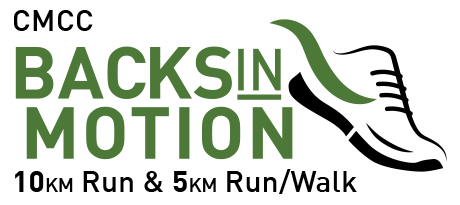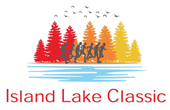At this time of year, when we as runners are thinking again about building up mileage for the upcoming spring races, it’s a good time to also think about building strength in a few key muscles. Often, we fail to recognize the importance of strength to keep us running at our best and also injury free.
Stabilizing muscles in the hip (muscles that keep the hip and pelvis in an optimal position while running) are often weaker in comparison to our large prime mover muscles (muscles that propel us forward while running). The main hip stabilizer that has been researched the most is called the Gluteus Medius muscle, although it does get assistance from other smaller deeper muscles in the hip. Mainly, these stabilizing muscles in the hip act to hold the ball at the top of the thigh bone in the centre of the hip joint socket, they externally rotate the thigh (turn the thigh outward) and they abduct the hip (ie: keep the pelvis level, stop the trunk from moving side to side, stop the knees from knocking together, and generally help to keep us moving ahead in a straight line!).
Weakness of the hip abductor/external rotator muscles is thought to be a contributing factor to many overuse injuries that runners can face. Such injuries as Iliotibial Band (IT Band) Friction Syndrome at the knee (pain on the outside of the knee), Trochanteric bursitis or ITB friction at the hip (pain at the outside of the hip), patellofemoral pain syndrome, pain at the front of the hip or the knee, and hamstring injuries. Although there are other factors that can contribute to these injuries, such as lower extremity alignment, over pronation of the foot, leg length difference, and training errors, muscle strength is one factor a runner can address themselves to help to prevent some of the above mentioned problems that may cause them to be kept on the sidelines.
There are several specific exercises that can be done to selectively strengthen the gluteus medius and hip stabilizing muscles. Below you will find examples of three such exercises, progressing from least to most challenging for the hip musculature. You should be able to do 2-3 sets of 30 repetitions with good form before moving on to the subsequent exercise shown. Make sure to test yourself on the first level, and then the second level before jumping on to the third. You do not need to do all three exercises at once, just do the level which will challenge your body (ie: the level that you cannot quite complete the 30 repetitions) Depending on your ability, it may take several weeks to be able to master each level. Do not continue these exercises if they exacerbate symptoms of an already present injury. If increased pain is being experienced in the injured area or if symptoms are not improving after several weeks, it is recommended that you seek the advice/treatment from a regulated health professional. If you are already receiving treatment for an injury, ensure that you check with your treating health professional before beginning these exercises. Mild post exercise muscles soreness in the side of the hip and or buttock area is considered normal with these exercises.
Terri Baker BA Kin, BScPT, RCAMT
Registered Physiotherapist
Exercise 1 “The Clam Shell”

 a) Start position: lying on side with knees and hips bent slightly
a) Start position: lying on side with knees and hips bent slightly
b) Action: keeping feet touching, raise top knee, hold 5 seconds, slowly lower. Make sure not to roll hip/pelvis backwards. It is not necessary to move the knee upwards as far as possible, about 6 inches is plenty. You should feel the muscles in the outside and slightly to the back of the hip tightening during the exercise.
Exercise 2 “Side leg raises”

 a) Start position: lying on side with back and buttocks touching a wall, the bottom knee bent and that foot touching the wall also.
a) Start position: lying on side with back and buttocks touching a wall, the bottom knee bent and that foot touching the wall also.
b) Action: Keeping the top leg straight and the heel of that foot with a gentle pressure backwards into the wall, lift the top leg up, hold 5 seconds and lower slowly. You should feel the muscles tightening in the outside and back of the hip/buttock during this exercise.
Exercise 3 “One leg ¼ squats”
 a) Start Position: Standing on one leg with the other leg held upward, slightly in front of the body. You can stand on a stair or a stool if you would like. Something sturdy to hold lightly with one hand for balance is recommend (ie: railing or countertop)
a) Start Position: Standing on one leg with the other leg held upward, slightly in front of the body. You can stand on a stair or a stool if you would like. Something sturdy to hold lightly with one hand for balance is recommend (ie: railing or countertop)
b) Action: Bend the knee you are standing on until it is in a ¼ squat position. Hold 5 seconds and then slowly straighten the knee and return to start position. Technique is very important here: keep the knee you are standing on pointing in a line that would pass through the second toe, keep the knee steady (no wobbling) and keep the pelvis/hips level (do not lean to one side).
References:
Bolgla, L. and Uhl, T. Electromyographic analysis of hip rehabilitation exercises in a group of healthy subjects. Journal of Orthopaedic & Sports Physical Therapy 2005. 35: 487-494.
Fredericson et al. Hip Abductor Weakness in distance runners with Iliotibial Band Syndrome. Clinical Journal of Sports Medicine 2000; 10: 169-175.
Sahrmann S., Diagnosis and treatment of movement impairment syndromes. 2002. Mosby, Ince. St Louis, Missouri.



















Thx for the exercices. I have been suffering from hip/gluteal/hamstring injuries for a few years now. Everytime I begin to train for a race, I am sidelined with pain in my outer hip/glute pain. I literally wince every running step I take. Any other advice you can give me I would very much appreciate. I am trying to qualify for the 2009 New York City Marathon. Thanks. Sarah.